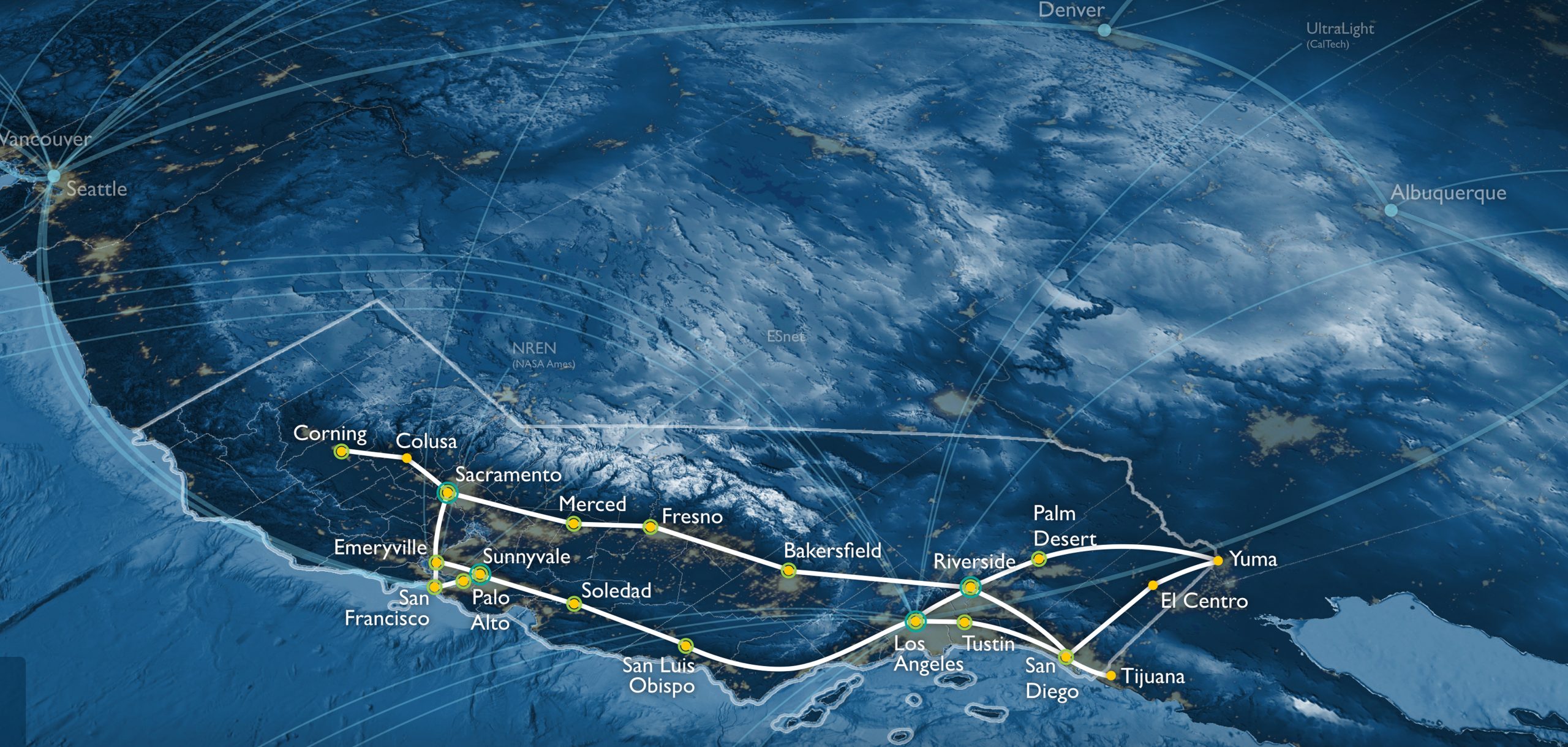CENIC has built a 400 gigabit-per-second (Gbps) single-carrier optical circuit between Los Angeles and Riverside in California, one of the first-ever production 400G super-channels to be deployed by a US regional research and education network. Construction included upgrading nodes in Los Angeles, Tustin, Oceanside, San Diego (home to the San Diego Supercomputer Center), Escondido, Sun City, and Riverside to 400G capabilities.
This next-generation super-channel ensures CENIC can meet today’s networking demands while remaining future-proof and flexible to meet the needs of tomorrow. CENIC members conduct scientific research in astronomy, genomics, climatology and more, and they need to be able to collect, transfer, process, and store huge data sets as they collaborate with colleagues across the world. Each year, CENIC’s network traffic grows by roughly 60 percent; in 2019, the network moved an exabyte of data.
To develop the 400G connection, CENIC upgraded network infrastructure to flex spectrum Reconfigurable Optical Add-Drop Multiplexers (ROADMs) and the NCS 1004 transponder platform. The new 400G wavelengths support network operational benefits to deliver 100G services.
“This is an important networking milestone for CENIC,” said President and CEO Louis Fox. “With increasing demands for 100G services among our community, from research scientists working with big data sets to educators leveraging technology to transform the classroom, network capacity should not limit the work or ambitions of our researchers, teachers or students.”
“This achievement is part of CENIC’s ongoing plan to upgrade to the latest 400G technology,” added Sana Bellamine, senior optical engineer. “CENIC plans to expand 400G capabilities along its coastal fiber path from Los Angeles to Sunnyvale in 2020. Emerging 400G-plus technologies are space and power-optimized, and have a lower cost per bit, enabling CENIC to scale efficiently.”
The new capacity will support the Pacific Research Platform (PRP), a partnership of more than 50 institutions, led by scientists at UC San Diego and UC Berkeley, with funding from the National Science Foundation. PRP builds on the optical backbone of Pacific Wave, a project of CENIC and Pacific Northwest Gigapop, to create a high-speed freeway for large scientific data sets by connecting campus networks and supercomputing centers on a regional scale, with Science DMZs at each site. Developed by the U.S. Department of Energy’s Energy Science Network (ESnet) engineers, Science DMZs address common network performance problems by tailoring the environment to the needs of high-performance science applications, including high-volume bulk data transfer, remote experiment control, and data visualization. PRP supports projects such as the Large Hadron Collider (LHC) and the Large Synoptic Survey Telescope (LSST).
Nationally, CENIC’s new 400G connections will support FABRIC, an NSF-funded testbed for scientists to build the Internet of the future. FABRIC anticipates a 1 terabit-per-second (Tbps) network, interconnecting nodes at major research and supercomputing centers, including connections along the West Coast.
“This new 400G circuit is an important step forward in evolving an optimal, highly flexible architecture for high-performance interconnection of research and education networks, and most importantly, researchers and their crucial instruments, data and applications,” said Tom DeFanti, PRP co-principal investigator.

